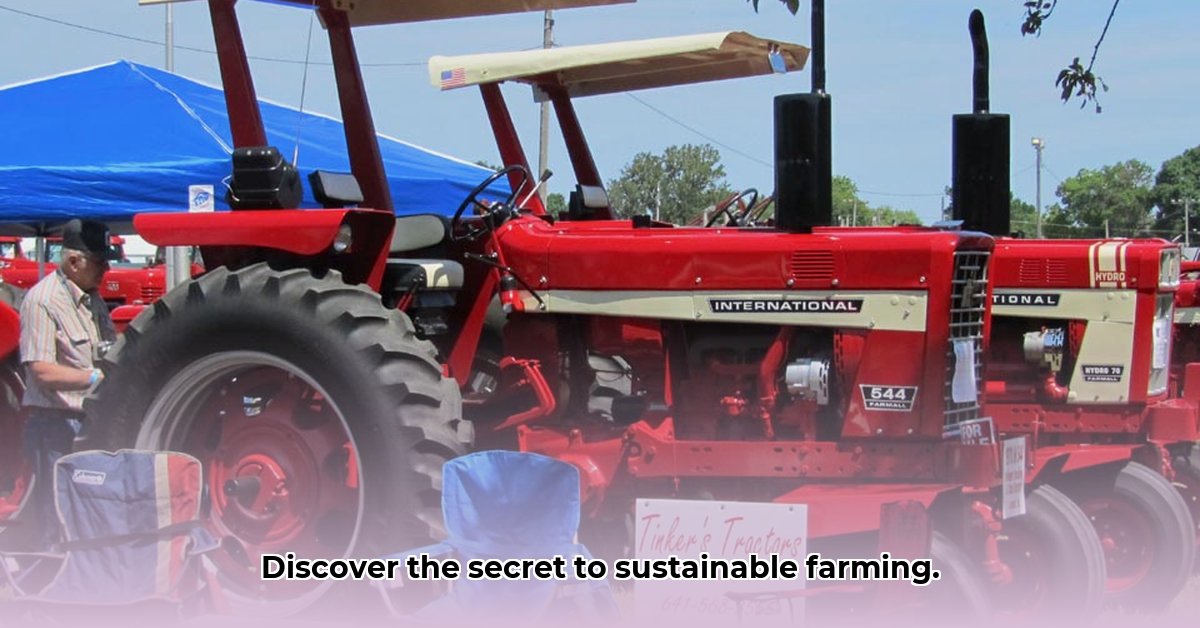
A Sustainable Farming Icon
The International Harvester 544 tractor, a workhorse produced between 1968 and 1973, is experiencing a resurgence in relevance. While modern tractors boast advanced technology, the 544 offers a compelling case study in sustainable agricultural practices. Its relatively simple design, robust build, and lower power output contribute to environmentally friendly farming methods, making it a hidden gem in the world of sustainable agriculture. This article delves into the 544's history, technical specifications, and its surprising advantages in reducing the environmental footprint of farming. For more detailed information, check out this dedicated website.
A Look Back: The 544's Humble Beginnings
The International Harvester 544 emerged in an era before GPS guidance and complex computer systems. Its design prioritized strength, simplicity, and ease of operation. This focus on practicality and durability—a stark contrast to today's often complex tractors—is precisely what makes the 544 so appealing in the current context of sustainable agriculture. It showcases that sometimes, a simpler approach proves to be more environmentally friendly.
Under the Hood: Power, Performance, and Practicality
The 544 offered a choice of gasoline or diesel engines, with horsepower estimates ranging from 40-60 hp, depending on the specific configuration. This relatively low horsepower, compared to modern tractors, translates to potentially significant fuel savings. Furthermore, its lighter weight minimized soil compaction, a critical factor in preserving soil health and long-term productivity. Isn't it fascinating how a seemingly minor detail like weight plays such a significant role in sustainable farming?
The 544 and Sustainable Agriculture: A Powerful Partnership
The 544's lower power and reduced weight directly contribute to less soil compaction. This leads to improved soil structure, better water retention, and ultimately, healthier, more productive fields. But its sustainability benefits extend beyond soil health. The tractor's considerable durability, with many still operational decades later, highlights its repairability. This longevity stands in stark contrast to the often-planned obsolescence of modern machinery, thereby reducing the environmental impact associated with manufacturing and disposal.
The 544 vs. Modern Tractors: A Comparison
Directly comparing the fuel efficiency of the 544 to modern tractors requires caution due to a lack of standardized, readily available data. However, it's reasonable to assume that a smaller, less powerful engine performing the same task will generally consume less fuel. While the 544 might not match the speed of modern tractors, its lower fuel consumption and its gentler treatment of the soil offer significant environmental advantages. Further research is needed to quantify this difference precisely. This leads to a critical question: could a focus on reduced power and increased durability in modern tractor design yield substantial environmental benefits?
Lessons from the Past, a Vision for the Future
The International Harvester 544 is more than a piece of agricultural history; it's a powerful illustration of sustainable design principles. Its enduring capabilities remind us that simplicity, durability, and longevity are not obsolete concepts. In fact, they may hold the key to creating a more environmentally-friendly agricultural sector. The 544 challenges us to reconsider our approach to agricultural machinery, suggesting a renewed focus on repairability and reduced power output could yield significant environmental gains.
The Need for Further Research
While the 544 strongly advocates for sustainable agricultural practices, further research is crucial to fully quantify its environmental benefits. Comparative studies analyzing its fuel consumption and soil compaction against modern tractors would provide more robust evidence. This research could influence the design of future farming equipment, promoting more sustainable and environmentally responsible practices. Such studies could explore the long-term impact of reduced soil compaction on crop yields and overall soil health. The 544's legacy, therefore, is a call to action – a prompt to innovate by learning from the past.
Technical Specifications (Approximate Values – Data Varies Across Sources)
| Feature | Specification | Notes |
|---|---|---|
| Engine Type | Gasoline or Diesel | Specific model varied. |
| Engine Displacement | Varied depending on fuel type and model | Precise figures depend on engine configuration |
| Horsepower | Likely in the range of 40-60 hp | Estimates vary across sources; further precise data needed. |
| Transmission | Manual, likely a 6-speed or similar | Precise gear ratios vary depending on the model. |
| Weight | Relatively light compared to modern tractors | This contributes to reduced soil compaction. |
The International Harvester 544 tractor stands as a compelling example of how thoughtful design can contribute to sustainable agriculture. Its simple yet robust design offers valuable lessons for the future, and further research can solidify its value and inform the development of even more environmentally conscious agricultural machinery.